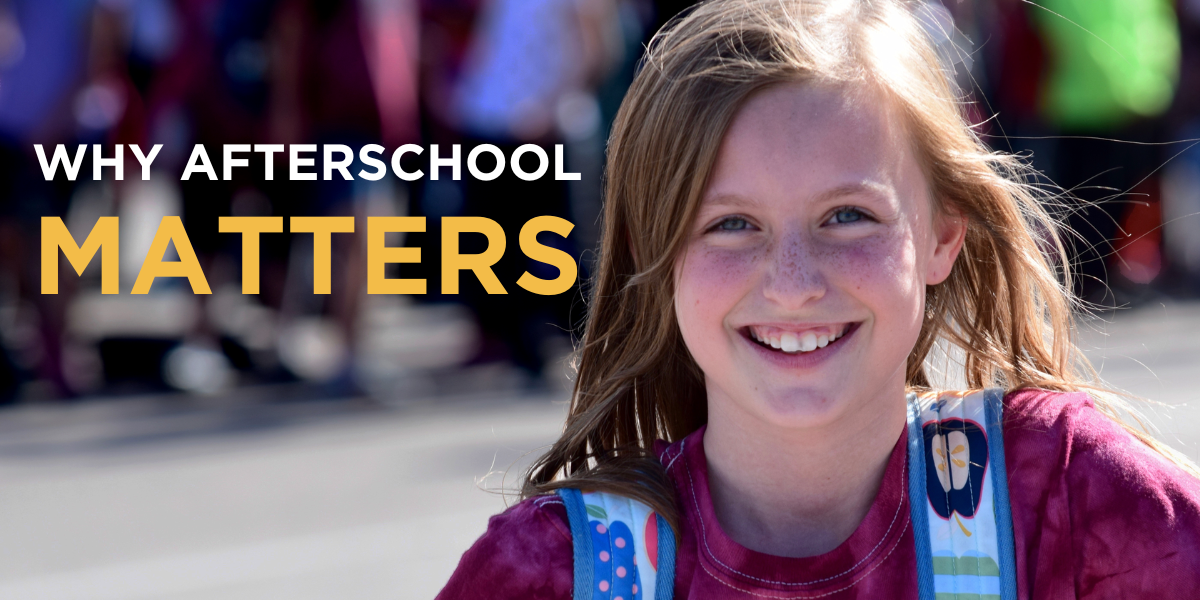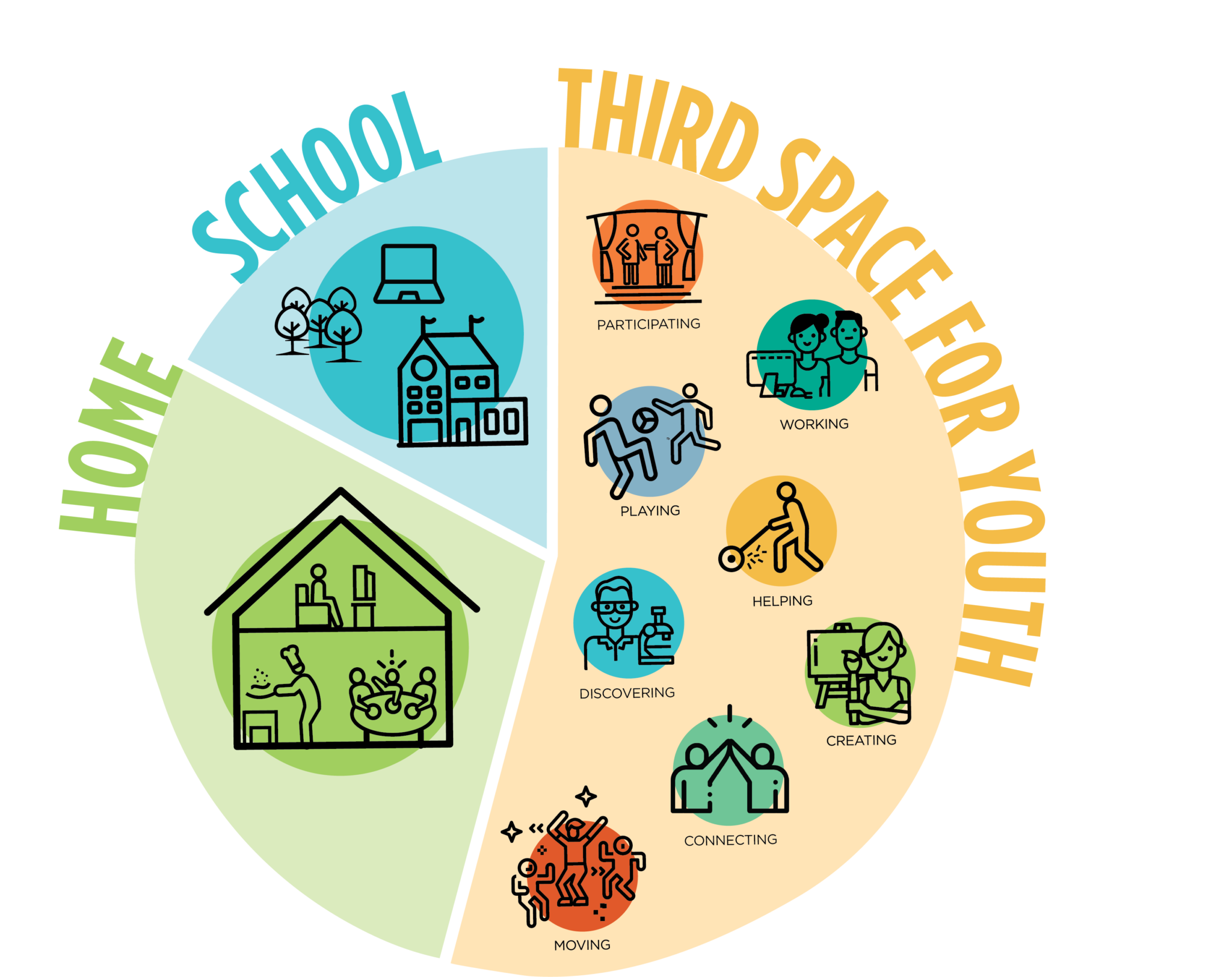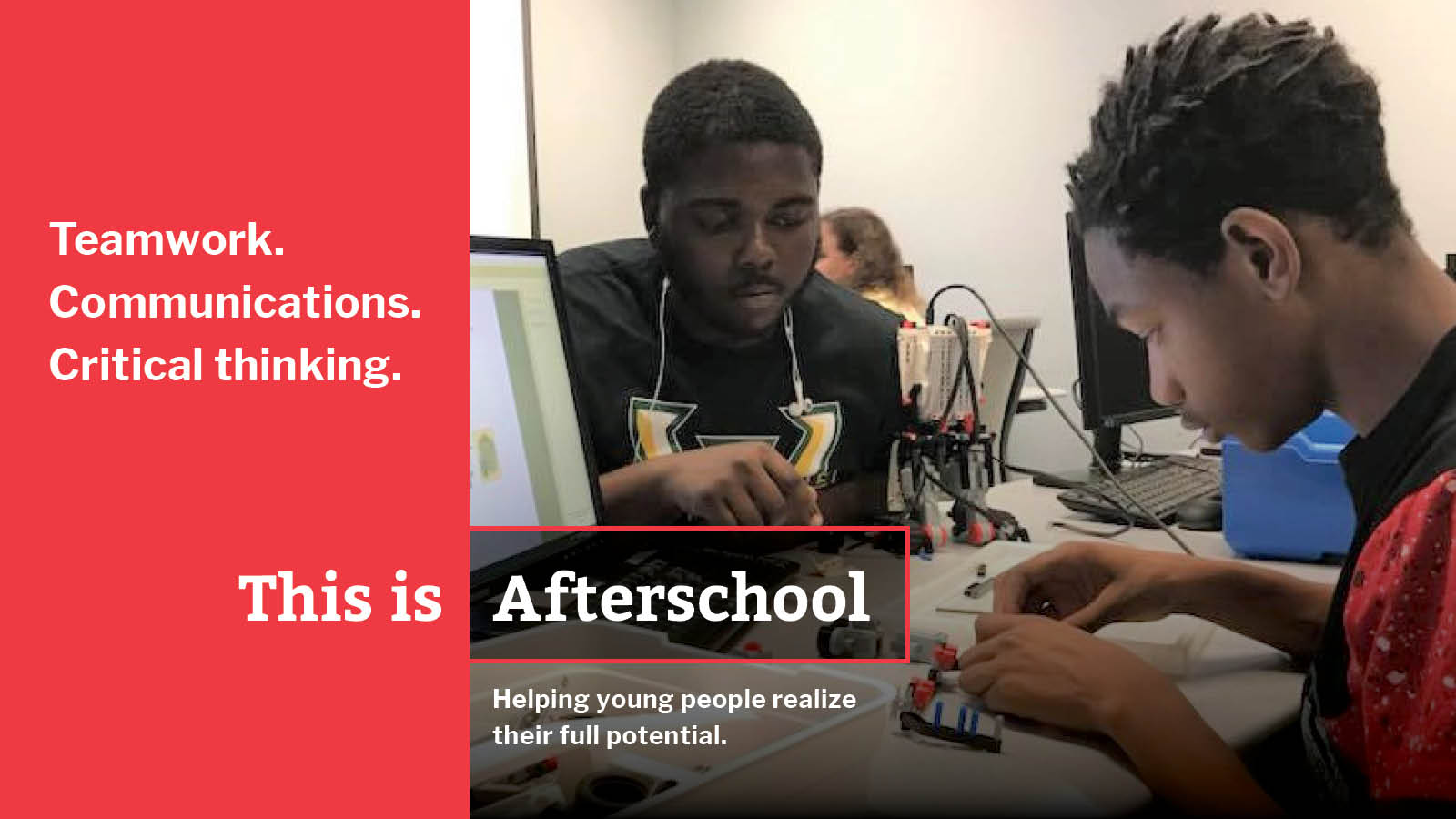

Afterschool, summer learning, out-of-school time, and “third space” programs re-imagine how, where, and when our young people learn. Youth spend approximately 20% of their waking hours in school. How they invest the other 80% of their time in the third space—when they are not at home or at school—is a game changer. Studies show affluent youth experience 6,000 more hours of enrichment and learning compared to their low-income peers by the 8th grade. High-quality afterschool learning hours can turn this inequity around.
Decades of research show that afterschool programs help children learn, grow, and avoid risky behaviors. Programs spark interest in learning so students attend school more often, get better grades, and improve their behavior in class. Through new learning experiences, young people discover what they love to do and gain the skills they need to land that first job.
Keep Youth Safe: Across Vermont, 1 in 4 youth are alone and unsupervised from 3 to 6 PM. These are the hours when juvenile crime and victimization peak. In addition to keeping youth away from drugs and other risky behaviors after school, afterschool programs can build protective factors that prevent substance use disorders from occurring—such as connectedness, self-control, self-confidence, adult mentors, and quality peer relationships.
Inspire Learning: Studies demonstrate that more consistent time spent in afterschool activities during the elementary years is linked to narrowing the academic achievement gap. In a longitudinal study, income differences in math achievement were eliminated for students who had consistent afterschool activities across their K-5 years. Studies also show that those in out-of-school time programs have better grades, attendance, behaviors, and college/career attainment.
Support For Working Families: Parents benefit from peace of mind when their children are engaged in quality programs. In Vermont, 80% of children and youth ages 6–17 have all available parents in the workforce. For most families, there is a gap of 15–25 hours per week when parents are still at work and children and youth are out of school and need supervision. This need for programs is even greater during school vacation weeks and over the summer.
Build Protective Factors: By their very nature, afterschool and summer learning programs offer safe spaces for youth to build protective factors by providing opportunities for young people to connect, learn new things, express themselves, access healthy food, and build relationships with caring adults. According to the 2017 Vermont Youth Behavior Risk Survey, 60% of high school students feel like they matter to the people in their community. For young people who participate in afterschool activities, this measure of belonging goes up to 71%.
Now More Than Ever: The 2021 Vermont Youth Project survey showed that the COVID-19 global pandemic has prompted a rise in mental health concerns for youth. Nearly 1 in 2 high school students say their mental health has declined because of COVID-19. Now, more than ever, we must ensure that all young Vermonters are active, engaged, connected, and heard.
